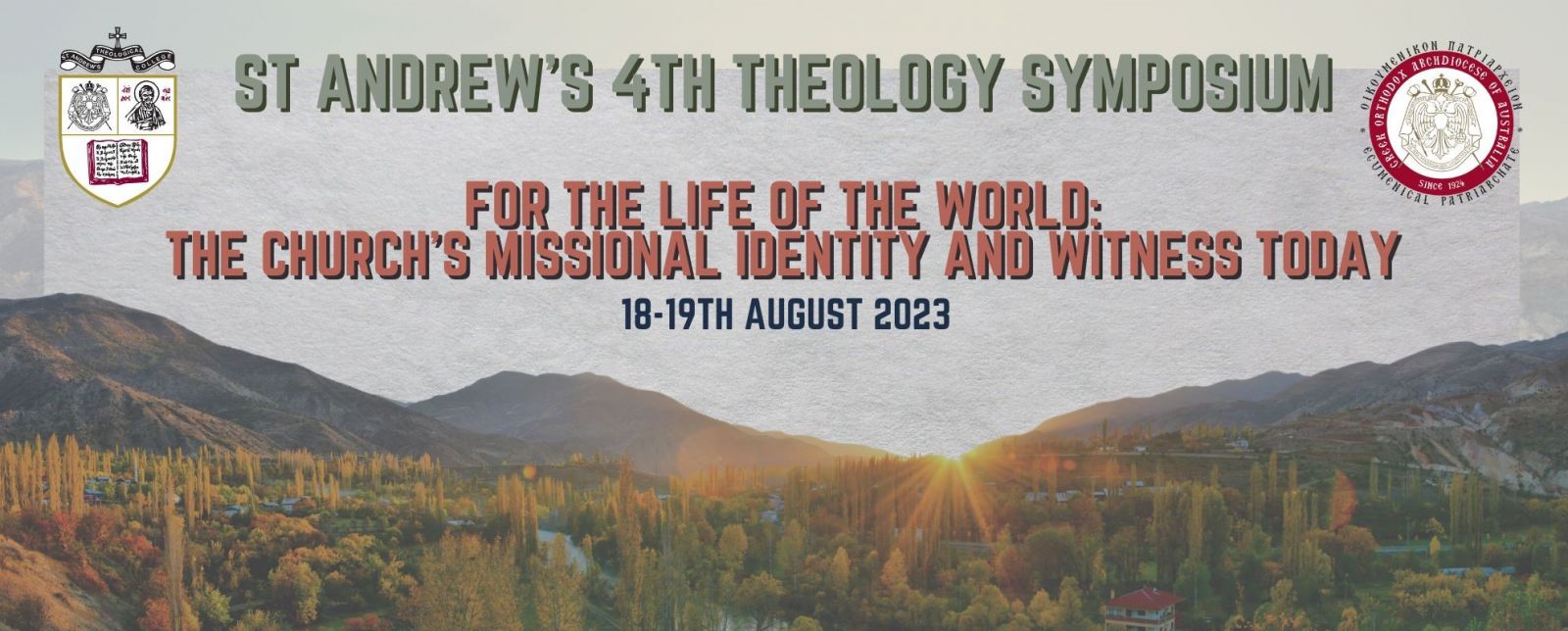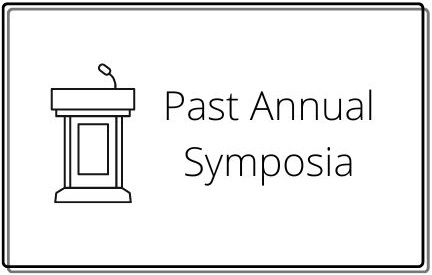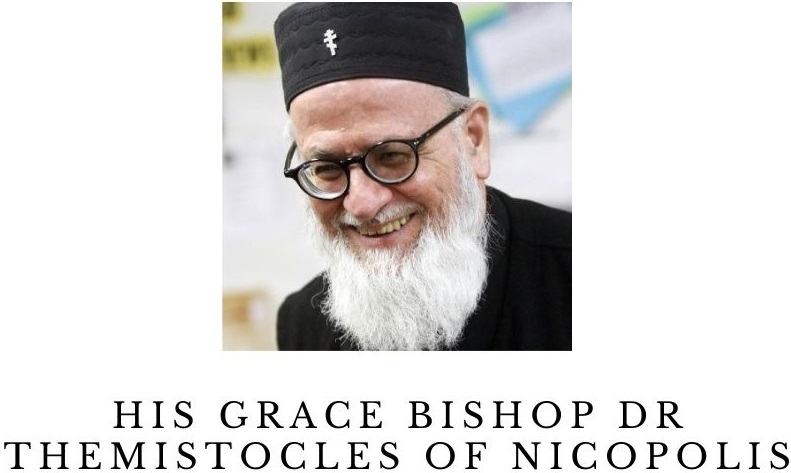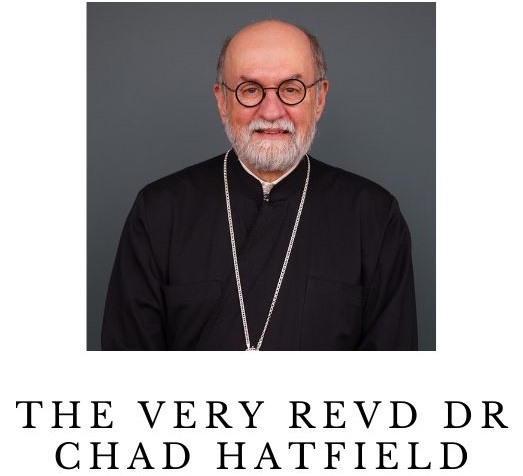Dr Vassilis Adrahtas
University of New South Wales and Western Sydney University
Indigenous Orthodoxy or Orthodox Indigeneity? Prospects and Problems of Mission Work amongst the People of the Dreaming
Abstract: The title of my paper is not about a wordplay but alludes to a crucial tension; a tension between the faithful and the faithful-to-be within an Australian context that prioritises Indigeneity. The basic question which the paper addresses is related to the possibilities and, at the same time, the limitations that Australian Indigeneity opens up to or entails for traditional Orthodoxy. In other words, my exploration refers, on the one hand, to the extent that Indigeneity can enrich the Orthodox experience and, on the other, to the threats that it could potentially pose to the latter’s phenomenological integrity and distinctiveness.
A contextual missiological intervention of Orthodoxy in Australia must consider the Indigenous hierophanics as the most significant cross-religious backdrop in the Antipodes. This means that any theology in Australia, in order to be/come Indigenous, must engage in a give-and-take relationship with what could be regarded as the fundamental common ground of Australian Indigeneity. The latter, in my view, would have to encompass the following: (I) the prominence of Land; (II) the awareness of Sameness; (III) the initiatory function of ritual; (IV) the performativity of song, dance, music and painting; (V) the autonomy and interdependence of country; (VI) the pan-Aboriginality of certain hierophanic motifs.
These Indigenous cross-religious aspects are not only necessary but also challenging, since they either stand in juxtaposition or contrast to non-Indigenous conceptualisations of the Orthodox experience or have already been theologically utilised by various Christian traditions with mixed results, ranging from relative success to relative failure. Moreover, the latter is exacerbated by the fact that the trauma of colonisation has been more or less associated with Christianity. In any case, the present paper aspires to set forward thirty pertinent research questions and delve into discussing their dialectical relevance as to the creation of an Indigenous Orthodox theology.
A/Prof. Margaret Beirne
St Andrew’s Greek Orthodox Theological College
The Mission of the Churches in Today’s World
Abstract: Although published fifty years apart, there is a remarkable similarity between the Holy and Great Council document ‘The Mission of the Orthodox Church in Today’s World’ (2016) and ‘Gaudium et Spes’, a key document of the Second Vatican Council (1965). Both were the fruit of substantial prayerful dialogue among the highest ecclesial authority of their respective Christian traditions. This paper will set the two documents in context, identify some common themes and scripture references, and suggest how they complement and enrich each other. It will conclude with some thoughts on how they might inform the topic of our Symposium: “For the Life of the World: The Church’s Missional Identity and Witness Today.”
Very Revd Anastasios Bozikis
St Andrew’s Theological College
Establishing ‘Christ’s Greece’: The Gospel of Pietism and the Re-conversion of a Nation
Abstract: Four hundred years of Turkish Muslim occupation had left the Church of Greece in a parlous state. National independence in the 1830s found it demoralised by centuries of oppression and unequal to the task of the spiritual and educational re-cultivation of its clergy and laity. Into this breach stepped the Protestant missionaries and, from the middle of that century, a number of Orthodox ‘societies’ and ‘fraternities,’ modelled on the para-church missionary societies of the West, seeking the reconversion of Greece to Christ. This paper will argue that, while well-intentioned and offering an undoubted personal, religious experience to their followers, the methods employed by these mainly lay organisations, as well as the content and tone of their message, introduced a pietistic and overtly moralistic dimension to the religious life of Greece inconsistent with traditional Orthodox piety. As the influence of these societies diminishes, the challenge remains for the Church to assess critically their missionary legacy, discarding such elements as are found to be incompatible with the Tradition and embracing, within an authentic ecclesial framework, those contributions that can continue to further the Church’s evangelistic witness.
Revd Dr Antonios Kaldas
St Cyril’s Coptic Theological College
The Pros and Cons of a Contemporary Orthodox Apologetic
Abstract: The Early Christian Apologists marshalled their paideia and their rhetorical skills to eloquently defend Christianity to a hostile pagan and Jewish world. Their apologia was motivated by sheer survival but went much further. From the Middle Ages on, Christian apologetics became more of an intellectual contest within a slowly secularising but still inherently Christian world. Today, with Church attendance plummeting in the West, is there a role once again for a Christian apologetic aimed at sheer survival (albeit in the context of a different kind of threat)? Some have argued that a rational or rhetorical apologetic (or natural theology) is more characteristic of Western Christianity but has little value for the Eastern Christian or may even be dangerous. And yet, a sizeable proportion of Eastern Christians now live in the West and must deal with Western thought. After sketching the objections against apologetics/natural theology, both from the East and the West, I argue that the Church cannot afford not to pursue this project today and explain why in many cases, mission is not even possible until the path is first cleared by apologetics. But the apologetics-sceptics are not completely wrong, and their objections can and should contribute to the moulding of the shape of contemporary Christian apologetics.
A/Prof. Philip Kariatlis
St Andrew’s Greek Orthodox Theological College
The Mission of the Church as Anticipation and Realisation of God’s Eternal Kingdom
Abstract: Twentieth century Orthodox ecclesiological studies typically presented the Church from within the theological framework of koinonia, namely as a community of those who did not only strive to become united amongst themselves but, more than that, a corporate reality genuinely called to abide and dwell in Christ. In so doing, scholars were able to articulate a systematic study of the nature and function of the Church in terms of the gift of God’s enduring presence or communion within the world when her adherents came together “in one place” [ἐπὶτὸαὐτό] (cf. Acts 2:1) to celebrate Eucharist. However, more often than not, such studies did not seriously account for the Church’s outward focused mission within the world as indicated in the liturgical injunction, “go forth in peace [ἐνεἰρήνῃπροέλθωμεν]”. It is for this reason, that others reacted to what they called a purely speculative or idealist ecclesiology pointing out that such an understanding of koinonia ecclesiology could not adequately explain her sine qua non missional mandate found in Christ’s great commission (Mt 28: 19). This paper will argue that the Church’s communal nature is properly realised when the faithful are not only ‘called’ to gather together in one place, so as to experience the new life of Christ revealed within the eucharistic synaxis of the ekklesia, but, more than that, when the Church looks outward, bearing witness and genuinely introducing proleptically—namely by way of foretaste—a new pattern of life defined by God’s eschatological kingdom. In this way, the Church will be shown to be not only inwardly focused, but also a missional reality—One engaged in sharing to the world the New Actuality that She is, namely, a mystagogical analepsis; a witness to the world of humanity’s genuine telos—that is,the ‘raising up’of humanity before God’s future kingdom to come, in the here and now.
Revd Prof. Gerard Kelly
Catholic Institute of Sydney
Synodality: A Precondition for a New Missional Energy
Abstract: The Roman Catholic Church is preparing for a synod on synodality. The purpose of the synod is not primarily to renew church structures, but rather to develop within the whole church an outward-looking, missionary focus. This sentiment was captured by the International Theological Commission, “Making a synodal church a reality is an indispensable precondition for a new missionary energy that will involve the entire People of God” (Synodality in the Life and Mission of the Church, n.9). This paper will explore the roots of the link between mission and synodality in the work of the Second Vatican Council. Through an intra-textual reading of the first three chapters of the Council’s Dogmatic Constitution on the Church (Lumen gentium) [The mystery of the Church; On the People of God; On the Hierarchical Structure of the Church and in particular the Episcopate], the paper will analyse the pastoral and missionary intention of the Council. Following the Council’s method of ressourcement, the renewed focus on synodality amounts to a “recovery” of an ancient notion and practice. The paper will argue that the Catholic Church is engaged in a new moment of reception of the Council. An important indication of this is the key teaching documents of Pope Francis. Just as important have been the consultations that have happened throughout the world in preparation for the first synodal gathering. The question remains: will this new moment help the church look outward with a new missionary energy, or will it further entrench a more inward-looking church.
Dr Andrew Mellas
St Andrew’s Greek Orthodox Theological College
Sacred Music and the Mission of the Orthodox Church
Abstract: C.S. Lewis famously remarked that we have a myriad of feelings that cannot be put into words: “And that is why I think that in a sense music is the highest of the arts, because it really begins where the others leave off” (Surprised by Joy). Indeed, the Christian tradition has always seen sacred music as a mysterious force that can stir emotions and enchant the soul. However, it is incredibly difficult to determine why music arouses emotions or engenders a spiritual awakening. Nevertheless, there are many examples of conversion that are associated with musical experiences and it is often the case that these converts will see their faith and the musical expression of their faith as intrinsically linked. This paper will explore the role of sacred music in evangelization and investigate whether music per se embodies the mystery of faith in a way that other liturgical arts cannot. It will focus on the sacred music of Byzantium and consider how the song of theology invites today’s seekers to experience the divine amidst a logocentric and dissonant world.
Revd Nemanja S. Mrdjenovic
University of Divinity
Bogomoljci– a Missional Movement of the Orthodox laity as a Blessing anda Challenge to the Church
Abstract: The focus of this essay is the ecclesial analysis of the phenomenon of the Bogomoljci movement in the Serbian Orthodox Church. This movement appeared at the end of the 19th and the beginning of the 20th century in the context of Serbian Orthodoxy in close contact with some protestant groups, as a type of a missional ministry of the laity. The aim of the essay is an attempt to present the true origins, development and the outcomes of the Bogomoljci movement, looking at both sides of the coin, the good and the bad, to understand the place and the role of such lay movements in the missional work of the Church today. The essay goes a step back in order to present the foundations and the background of the phenomenon, which is traced to the occasional lethargy in the inward mission of the Church. The essay also compares the original Bogomoljci movement which operated between the two world wars with the modern reinstatement which appeared in the early 1990s. Lastly, the essay points to the necessity of an objective revaluation of the consequences of this movement and possible lessons for the near and far future in the Church. In the time of an expanding growth of the Church in the Diaspora and a common romanticising of the past, the need to reaffirm some basic ecclesiological principles in the Orthodox theology might be of the highest importance for a development of a healthy missional outlook.
Dr Lydia Gore-Jones
St Andrew’s Greek Orthodox Theological College
The Orthodox Church and China
Abstract: Christianity was introduced into China three times in the country’s long history: as Jing Jiao (or the Luminous Religion) of Syriac provenance in the 7th- 8th century, as the so-called Yelikewen religion in the 12th-13th century from the Mongols, and finally during the Jesuit missions in the 16th century, which continued and was followed by other Protestant denominations till the 20th century. This time Christianity was to stay rooted among the Chinese people. The Orthodox presence in China began in the 18th century as part of the last wave of the introduction of Christianity, along with the appearance of Russian Orthodox Christians, as a result of Russia’s political, diplomatic, economic and scientific interests in China. In this paper I will present a historical overview of the origin of the Chinese Orthodox Church, her sharp vicissitudes through the political upheavals of the 20th century, and her status quo in contemporary China. I will also offer some personal, albeit immature, reflections on the opportunities and challenges facing Orthodox mission among the Chinese people now.
|


.jpg)



.jpg)





.png)